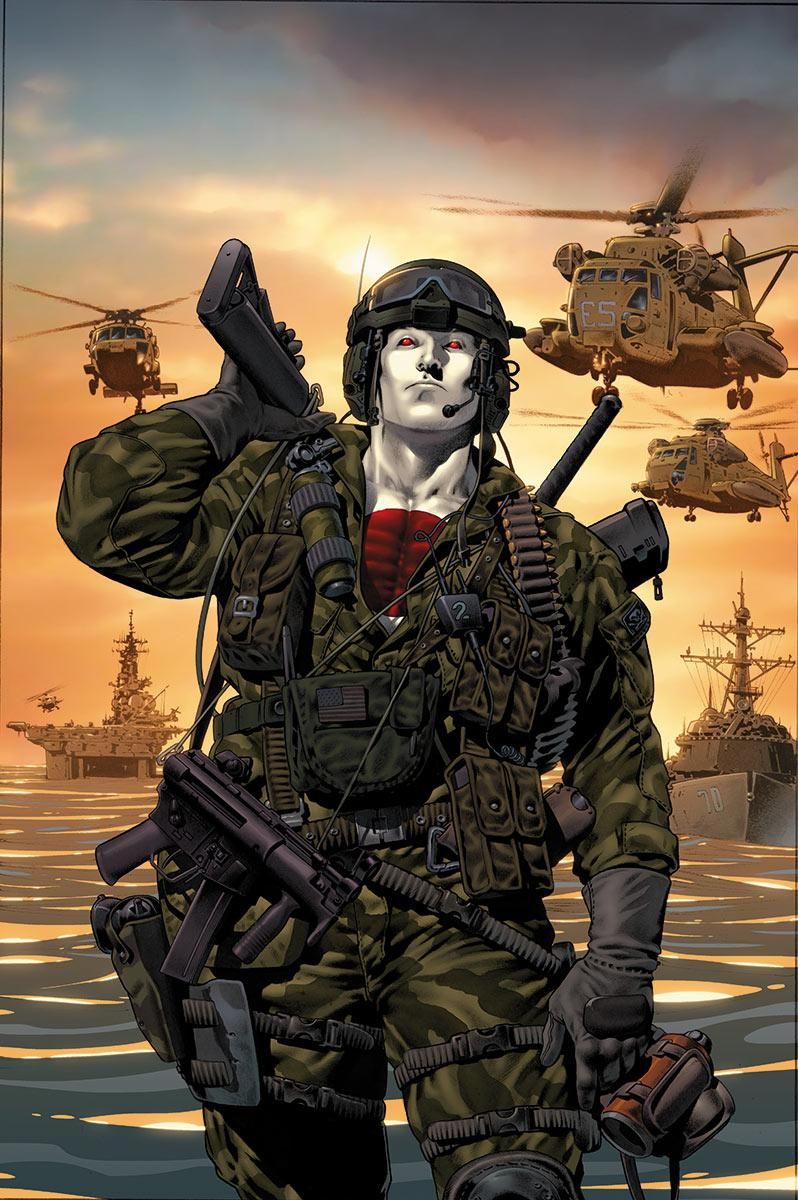"Bloodshot and H.A.R.D. Corps: H.A.R.D. Corps" #0 pulls back the curtain to share the origin of Project Rising Spirit's paramilitary unit H.A.R.D. Corps. Stretching back to Saigon in 1970 -- and maybe even earlier -- this comic focuses on Arthur Kendall and his contributions to Project Rising Spirit through the evolution of H.A.R.D. Corps.
Billed on the cover as "Three Decades of Destruction," this issue's story is titled "Rise and Fall" and depicts just that: the rise of H.A.R.D. Corps to successfully achieve the goals of their masters while humanity falls by the wayside. Despite his prominent positioning on the cover, Bloodshot has only a brief cameo -- effective, but brief nonetheless. Writers Christos Gage and Joshua Dysart manage to cover three decades of evolution and deliver three separate tales of H.A.R.D. Corps operatives, but keep the story flowing with the underlying narrative of Kendall's observations. That thread keeps "Bloodshot and H.A.R.D. Corps: H.A.R.D. Corps" #0 from becoming a lulling anthology pasted together.
The opening scene dumps the reader in Saigon, during the crux of the Vietnam conflict, with Kendall overseeing an Operative named Samuel as Samuel accepts the next, experimental step in the investigation of installing superpowers into human beings. That chapter covers five years and sees Samuel's service through the end of the Vietnam conflict, sewing new seeds of conspiracy for the Vietnam War along the way. Being the oldest chapter of this issue, it is only appropriate that the art from Valentine De Landro is heavily shadowed and bears a striking resemblance to a cross between Phil Hester, early Mike Mignola and Michael Lark. The memories and records would be sharper in contrast, but murky in detail. It's a strong look for this chapter and would definitely work for further H.A.R.D. Corps stories of any regard, but especially in that era.
The second installment, set in 1985, runs eight pages and focuses on Garrett Dupree, a family man who is missing out on being a dad. Joseph Cooper handles the art chores for this feature as, once more, Kendall checks in. Kendall and his superior, C.E.O. Prescott establish the fact that the mission is more important than family, a fact that comes with a high, devastating price. Cooper's art is more detailed than De Landro, but not overwhelmingly so. It makes for a nice transitional appearance between the 1970s and 1990s.
The final chapter, set in 1993 is where Charlie Palmer makes his appearance. Bloodshot is here as well. In the seven pages of this installment, familiar H.A.R.D. Corps monikers like Tracker, Hammerhead and Maniac also pop up. ChrisCross' art is more dynamically composed and definitely more detailed than either of the preceding chapters. This is also where H.A.R.D. Corps finds the temporary end to their road.
Let there be no doubt "Bloodshot and H.A.R.D. Corps: H.A.R.D. Corps" #0 is a bloody comic. When war and business cross paths, things can be unsettling, especially in periods of extreme upheaval. This comic is a collection of critical junctures throughout the history of H.A.R.D. Corps, all of which add to the fabric behind the Bloodshot and H.A.R.D. Corps quilt. This is a fine addition to the series so far and should prove to be more beneficial as H.A.R.D. Corps continues to evolve, especially given some of the revelations set for in this issue regarding mental and physical stability.

